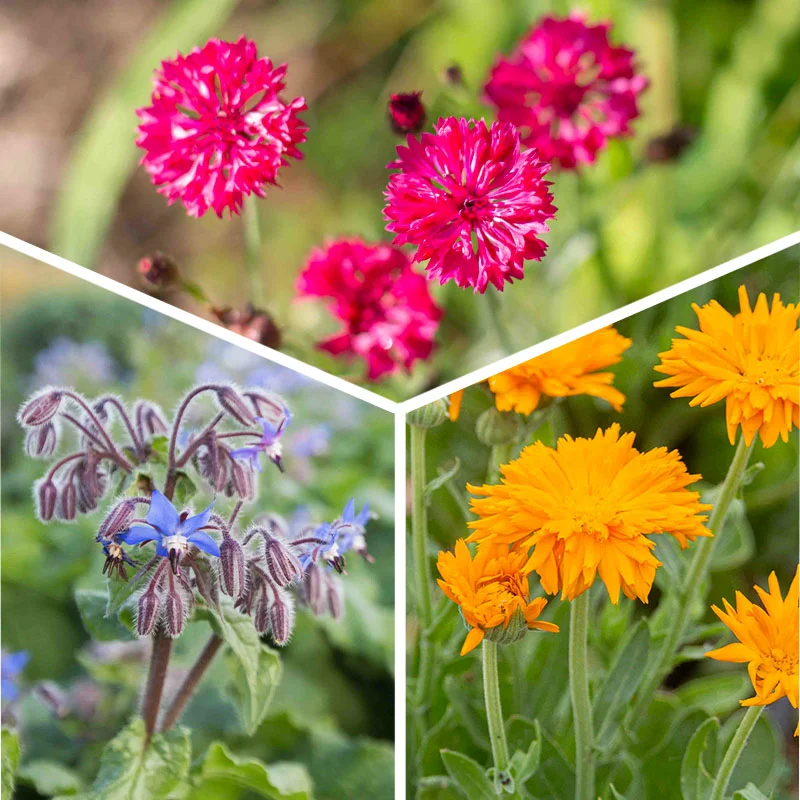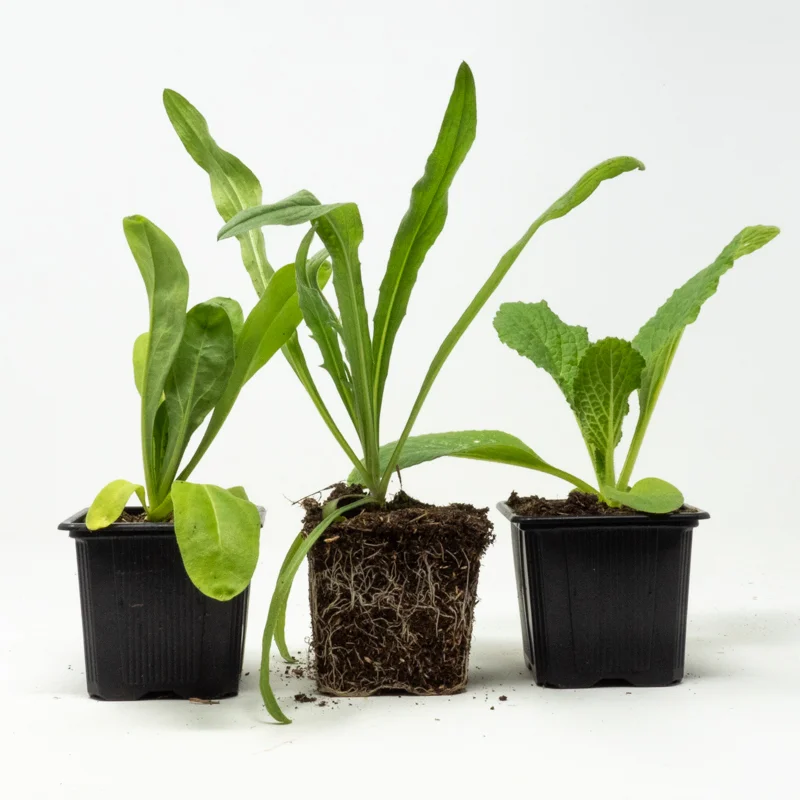Edible flower trio 3 organic plants
Bring color, flavor and freshness to all your dishes with this trio of edible flowers! From marigold petals with their peppery, resinous notes, to blueberry petals with their delicately sweet flavor, to borage star flowers with iodine and cucumber nuances, these flowers will brighten up any salad, dessert or drink. These easy-care plants can be grown in pots on a balcony or in the garden.
- White Borage
This borage, with its hairy stems and foliage, produces an abundance of white flowers. The flowers and fresh leaves can be eaten raw or cooked as a condiment. Dried, they are used in infusions.
- Garden marigold
From spring to autumn, calendula offers a mixture of orange and yellow flowers, single or double, that are edible, melliferous, tinctorial and have many medicinal virtues.
- Cornflower
The cornflower is a messicolous and melliferous species, unfortunately increasingly rare in the fields. It produces an abundance of beautiful blue flowers, which are both edible and medicinal.
Borage, blueberry and marigold: how to grow them?
Also known as companion cropping, companion planting is a horticultural technique that involves choosing the right combinations of vegetable, fruit, flower and herb plants in the garden. These plants, grown alongside others, improve growth, flavor... and also enrich the soil. This is the case, for example, with legumes, which are capable of fixing atmospheric nitrogen and redistributing it to their neighbors via their symbiotic relationship with rice bacteria.
The most telling example of an associated crop is MILPA, or "the three sisters": corn, beans and squash. The corn acts as a stake for the bean, which fixes nitrogen in the soil, helping the corn and squash to thrive. The squash keeps the soil moist thanks to its broad leaves, which cover the feet of the other two plants.
Companion planting is an age-old technique that also helps to manage space in a garden or kitchen garden, and to combat disease and certain pests in the garden: grown alongside tomatoes, marigold repels aphids and protects the plants of the kitchen garden's star species!
Marigold: the star of companion plants
Without doubt the most useful and well-known flower in the vegetable garden. It has many advantages: it attracts syphids, whose larvae can feed on the aphids that ravage many vegetable garden plants, it assasinates the soil and, what's more, it's edible!
Nasturtiums are great neighbors!
Their magnificent flowers attract aphids and draw them away from other crops. They also keep downy mildew away from tomatoes and roses.
Carnations: tomatoes' best friend!
This flower can do it all. On the one hand, it repels invasive plants such as quackgrass and bindweed, repels parasites such as aphids and ants, and at the same time attracts numerous pollinators such as butterflies.
Shipping and delivery of the Companion Plants assortment
- Orders are dispatched Monday to Thursday.
- Delivery to mainland France only.
- Shipping cartons designed for optimal plant protection.
- Free shipping does not apply to plants.










